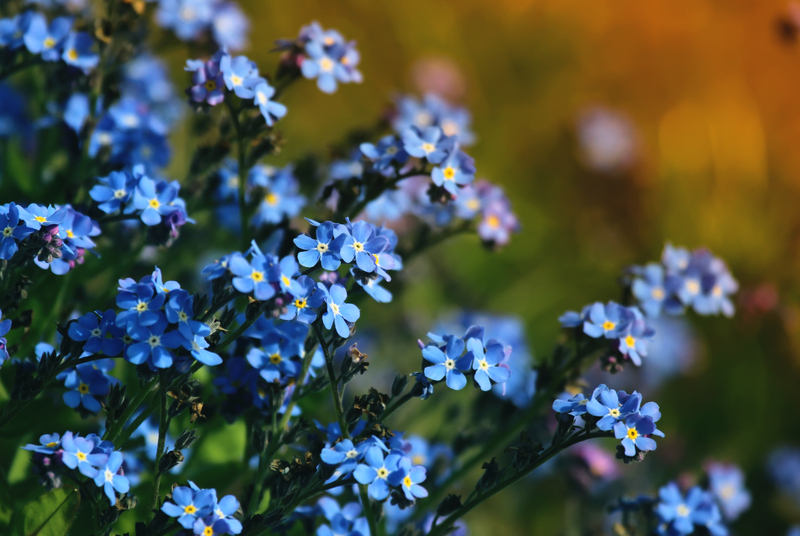Harmonious Landscapes: Balanced Hedge Trimming Shapes and Techniques
Posted on 21/08/2025
Harmonious Landscapes: Balanced Hedge Trimming Shapes and Techniques
Creating harmonious landscapes is both an art and a science--a thoughtful balance between the natural form and human design. One of the most distinctive ways to achieve equilibrium in your outdoor space is through balanced hedge trimming. Whether you envision geometric precision, undulating naturalistic forms, or something in between, hedge shaping and expert trimming techniques can transform your garden into an oasis of order and beauty. In this in-depth guide, we explore the best forms, methods, and strategies for sculpting hedges that elevate any landscape.
Why Balanced Hedge Trimming Matters
Balanced hedge trimming is more than just keeping your shrubs neat. It's about creating a cohesive aesthetic that harmonizes with the surrounding environment. A well-shaped hedge provides structure, privacy, and an eye-pleasing canvas for the rest of your garden. Improper or random pruning, on the other hand, can result in lopsided, patchy, or unhealthy plants. Exploring hedge trimming shapes and techniques not only enhances visual appeal but also ensures the health and longevity of your hedges.
Benefits of Balanced Hedge Trimming
- Promotes Healthy Growth: Correct trimming encourages new shoots and better air circulation, reducing disease risks.
- Enhances Curb Appeal: Well-maintained hedges dramatically increase the beauty and value of your property.
- Defines Outdoor Spaces: Hedges can create borders, rooms, or pathways, giving structure to expansive landscapes.
- Ensures Privacy and Wind Protection: Densely shaped hedges act as living fences and windbreakers.
- Encourages Biodiversity: Strategically trimmed shrubs offer habitat for birds and pollinators.

Understanding Different Hedge Trimming Shapes
When it comes to shaping hedges, the possibilities are nearly endless. However, certain hedge trimming shapes have become classics for their ability to bring harmony and balance to landscapes. Here's a closer look at the most popular options:
1. Formal Hedges
Formal hedges are characterized by clean, sharp lines and geometric shapes, such as rectangles, squares, or even spheres and pyramids. Achieving a symmetrical, even look requires regular, precise trimming. These forms work exceptionally well in structured gardens and along pathways or property borders.
- Box Shape: Perfect for low boundaries and walkways, creating a tidy, modern appearance.
- Rounded or Spherical: Adds softness and elegance while maintaining formality.
- Pyramidal: Offers a striking, sculptural focal point in gardens or near entrances.
2. Informal or Naturalistic Hedges
Informal hedges are trimmed less strictly, allowing the shrub's natural shape to shine. Naturalistic hedge trimming is ideal for cottage gardens or wildlife-friendly landscapes, where softness and movement take precedence over rigid lines.
- Flowing Organic Shapes: Resembles naturally occurring shrubs in meadows or forests.
- Gentle Undulations: Creates a whimsical, relaxed feel while guiding the eye smoothly across the landscape.
3. Topiary and Artistic Forms
For those with a creative spark, topiary--the art of shaping shrubs into ornamental forms--offers endless possibilities. From animals to abstract shapes, topiary can become the centerpiece of your landscape, drawing attention and sparking conversation.
- Spirals, Arches, and Obelisks: Classic topiary shapes that add drama and vertical interest.
- Animal and Whimsical Forms: Inspire joy and uniqueness, turning hedges into living sculptures.
4. Tapered Hedges
Tapered hedge shaping is an important technique particularly for taller hedges. This involves trimming so the base is slightly wider than the top. The result?
- Improved Light Penetration: Ensures sunlight reaches all parts of the plant, preventing sparse growth at the bottom.
- Structural Stability: Wider base supports upper growth, reducing risk of collapse under heavy snow or winds.
Essential Balanced Hedge Trimming Techniques
To achieve the most harmonious landscape possible, it's crucial to use the right hedge trimming techniques. From equipment choice to timing and execution, every detail counts.
1. Choosing the Right Tools
- Hand Shears: Ideal for small hedges and fine touch-ups. They offer precision and are quieter than power tools.
- Electric or Battery-Powered Hedge Trimmers: Best for large or lengthy hedges, making quick work of trimming broad surfaces evenly.
- Loppers and Pruning Saws: Used for removing thicker branches or for rejuvenation pruning on older hedges.
Always clean and sharpen your tools before use. Sharp blades make cleaner cuts, reducing plant stress and disease risk.
2. Timing Your Hedge Trimming
When you trim can be just as important as how you trim. Most hedges benefit from a first cut in early spring, once threats of hard frost pass, and a second cut in summer, after new growth.
- Flowering Hedges: Prune after flowering to avoid removing next season's buds.
- Evergreen Hedges: Avoid autumn trimming, which can encourage new growth vulnerable to winter.
- Deciduous Hedges: Early summer is ideal, with touch-ups as needed through late summer.
3. Creating a Straight Line
For perfectly even, balanced hedge shapes, use a guide:
- String and Stakes: Set taut string at the desired height; use it to guide cuts for both the top and sides.
- Measuring Tools: Level and tape measure help maintain even height and consistent width.
- Marking Paint: For creative designs or curves, use marking paint to outline the desired shape before cutting.
4. Tapering for Light and Health
To prevent "shading out" where the base of the hedge becomes sparse, always trim so the base is slightly wider than the top--called a "batter." This subtle angle maximizes sun exposure and creates a visually pleasing, stable hedge shape.
5. Gradual Shaping for New Hedges
Don't be overzealous when forming young or recently planted hedges. Shape gradually over several seasons, allowing the hedge to thicken and develop a strong framework.
6. Pruning for Density
Encourage bushy growth by trimming new shoots back by a third. This forces the shrub to send out additional branches, resulting in a lush, dense appearance that's crucial for privacy and formal shapes.
Step-by-Step Guide to Shaping a Harmonious Hedge
Ready to get started? Here's a simple yet comprehensive process for creating beautifully balanced and harmonious hedges:
-
Plan Your Shape:
- Decide if you want a formal, informal, or topiary style.
- Consider the hedge's context--does it line a walkway, form a partition, or frame a garden bed?
- Sketch your idea for reference.
-
Set Your Guide:
- Use string, stakes, or marking paint to establish level lines and curves.
- Double-check perspective and evenness from several angles.
-
Make the Primary Cut:
- Start at one end and move steadily.
- Keep your trimmers level with your reference guide.
-
Shape Sides First, Then Top:
- Trim the vertical faces while tapering slightly toward the top.
- Finally, level off the top for formal hedges, or round gently for naturalistic or topiary forms.
-
Refine and Touch Up:
- Step back regularly to check symmetry and fullness.
- Snip stray shoots and tidy rough areas by hand.
-
Clean Up and Mulch:
- Clear away all trimmings to prevent mold and pests.
- Mulch at the base to retain moisture and protect roots.
Common Mistakes in Hedge Trimming and How to Avoid Them
Even experienced gardeners can encounter difficulties. Here are common mistakes to avoid in hedge shaping:
- Cutting Too Much at Once: Over-pruning weakens hedges and leaves unsightly bald patches. *Trim a little at a time and avoid removing more than one-third of the total growth in a single session.*
- Neglecting Taper: Straight-sided hedges often become thin at the base. *Always trim with a gentle batter for health and stability.*
- Trimming at the Wrong Time: Late autumn and freezing weather can harm plants. *Check your specific hedge species for the best timing.*
- Dull or Dirty Tools: These cause ragged cuts and spread disease. *Sharpen and disinfect your trimmers before every use.*
- Ignoring Perspective: Only viewing from above or one side may result in a crooked hedge. *Regularly step back and check from multiple vantage points.*
Plant Selection for Harmonious Hedge Landscapes
The foundation of a harmonious hedge is the right plant. Selecting suitable species according to your desired shape, climate, and maintenance level is essential.
Best Shrubs for Formal Hedges
- Buxus sempervirens (Boxwood): Dense foliage, excellent for crisp, geometric trims.
- Taxus baccata (Yew): Rich green color with outstanding tolerance for repeated shaping.
- Ligustrum (Privet): Fast-growing and resilient, perfect for privacy screens.
- Lonicera nitida (Honeysuckle): Small leaves and fine texture, ideal for smaller, intricate shapes.
Top Choices for Informal and Flowering Hedges
- Forsythia: Brilliant yellow spring blooms with easy informal shaping.
- Spiraea: Soft, mounding form with abundant flowers.
- Viburnum: Berries and blossoms make these shrubs multi-seasonal favorites.
- Hawthorn: Offers wildlife value with flowers and thorny habitat.
Maintenance Schedule for Harmonious Hedges
Once your landscape is shaped, maintenance is key to longevity and beauty. Stick to a regular pruning, feeding, and monitoring routine:
- Annual Shaping: Most hedges benefit from at least one hard trim per year, with touch-ups as needed.
- Regular Watering: Especially important after trimming, during dry spells, and for newly planted hedges.
- Feeding: Apply slow-release balanced fertilizer in spring to support healthy new growth.
- Mulching: Refresh annually to conserve moisture and suppress weeds.
- Pest and Disease Checks: Address issues quickly to prevent spreading.
Pro Tip: Record Your Trimming Sessions
Take photos and jot notes each time you trim. Over the years, you'll gain insight into optimal timings and notice subtle shifts that will help you adapt your techniques for the most harmonious results.

The Artistic Impact of Balanced Hedge Trimming in Landscape Design
In many historic and contemporary gardens, hedges serve as the backbone of design. Symmetrical lines draw the eye toward focal points, while organic shapes soften hard edges and create restful atmospheres. Whether you're inspired by classic French parterres or English country gardens, practicing harmonious hedge trimming is a creative pursuit that elevates the entire landscape.
The satisfaction of maintaining balanced hedges goes beyond mere appearances; it cultivates a deeper relationship with your garden. Each trim is an opportunity to connect with nature, invest in your home's value, and create a space where tranquility and beauty flourish.
Conclusion: Crafting Your Perfect, Harmonious Landscape
The path to harmonious landscapes lies in understanding and mastering hedge trimming shapes and techniques. From the initial choice of plants to the finishing touches of your trim, every step plays a vital role in creating balance, health, and visual interest. Whether you prefer the order of formal hedges or the soft beauty of naturalistic forms, a well-maintained hedge is a timeless feature that will enhance any outdoor space for years to come.
If you're dedicated to cultivating harmony in your landscape, regular, skilled trimming and thoughtful design choices will reward you--season after season--with lush, shape-perfect hedges that reflect your unique style and passion for gardening.

